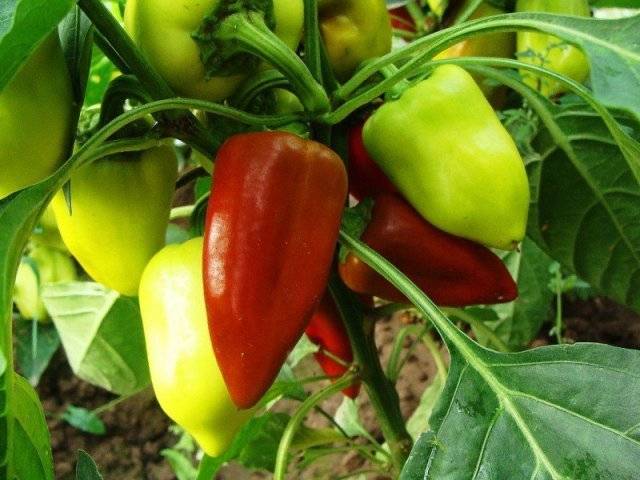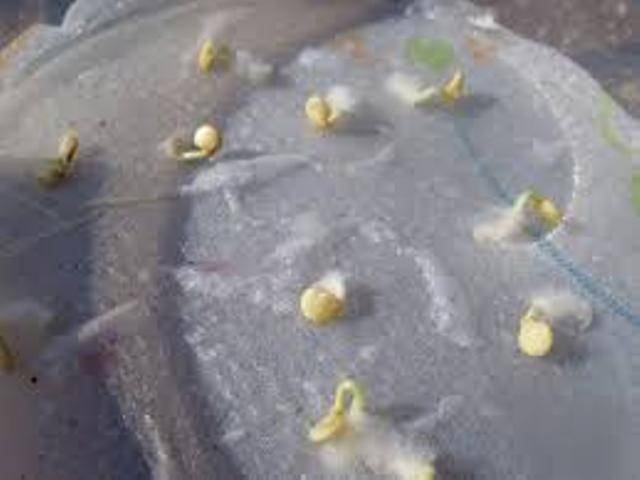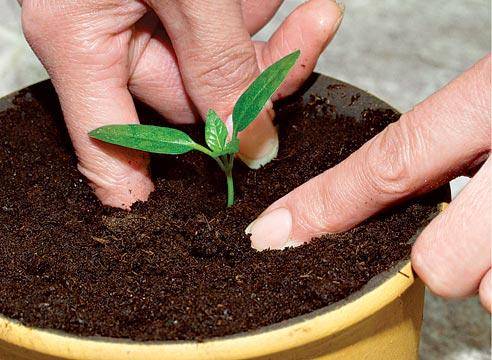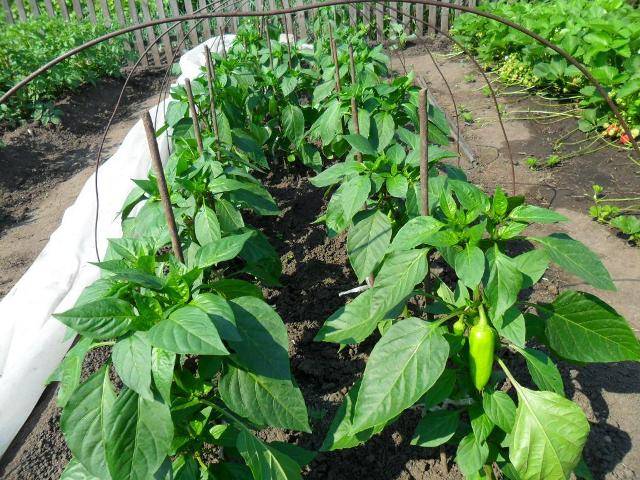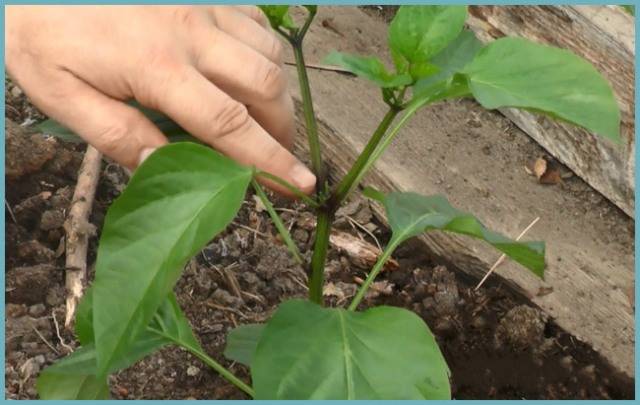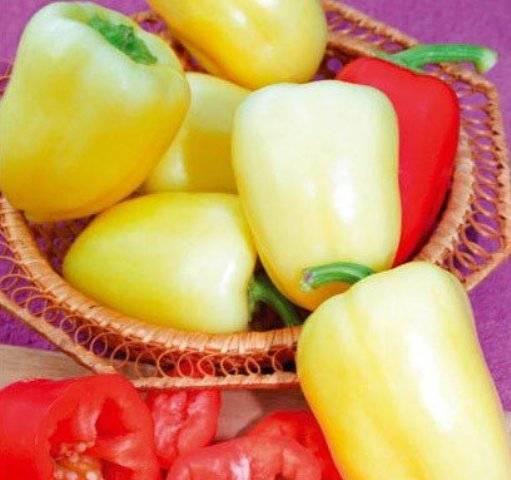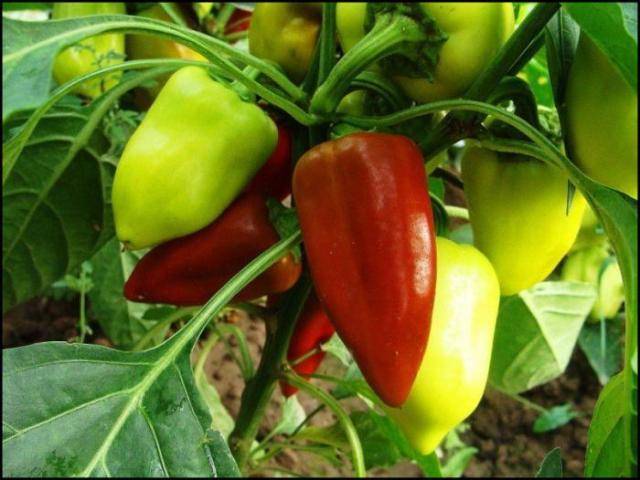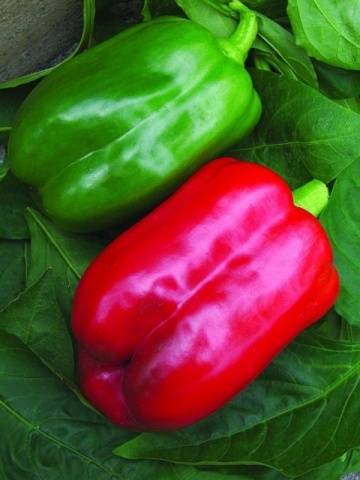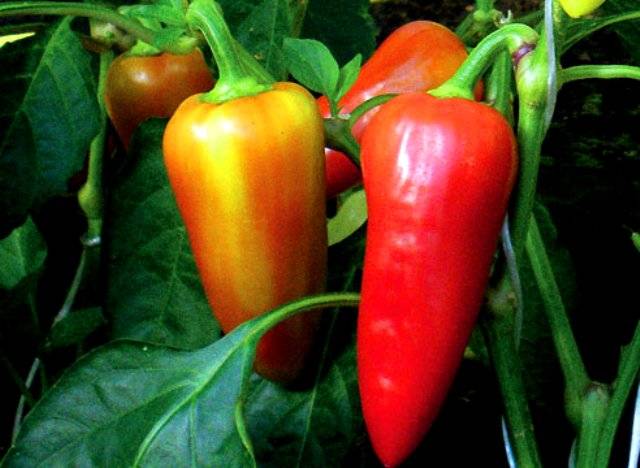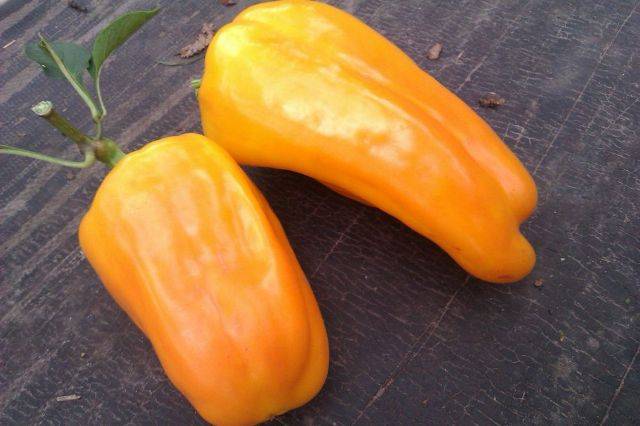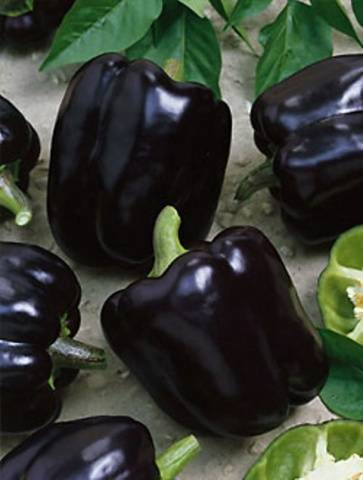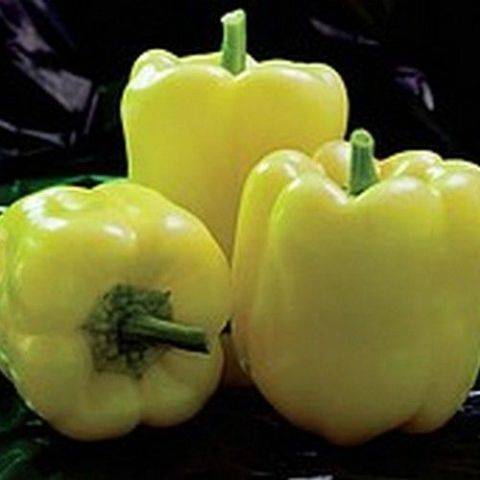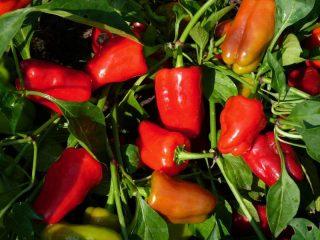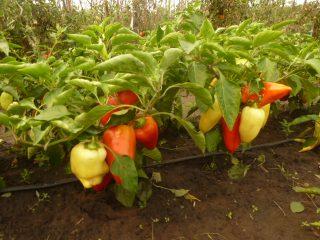Content
In order for the pepper to give a good and high-quality harvest, it is necessary to correctly approach the choice of the variety, taking into account not only such characteristics as the duration of the growing season, the weight and size of the fruits. It is very important to take into account the climatic zone in which the plant grows and bears fruit well, whether it is adapted for growing in open ground or in a greenhouse, and also how demanding the pepper variety is for regular watering and fertilization. Another criterion for choosing a productive litter is the exact time and timing of sowing planting material, and transferring it to open ground.
A few secrets for high yields
Even if you have chosen the most productive variety of pepper that is completely suitable for the growing conditions in your region, it is not a fact that after the end of the growing season you will be able to remove a large number of ripe and large fruits from the bush. Experienced gardeners know the secrets of obtaining large yields and achieve their goal by applying only 8 basic rules for growing pepper.
Sowing seeds
Having prepared the planting material, it is very important to observe the timing of its planting. As a rule, seeds are lowered into the ground at the beginning of February, trying to get early harvests, however, for the regions of the Urals and Western Siberia, such seedlings will not give a stable, friendly harvest. Early seedlings of even the most productive varieties do not always show what they are capable of, therefore, for these regions, it is better to sow planting material in mid-March.
Germination
In order to get a quick germination of seedlings, and the seedlings themselves were strong, the planting material must be soaked before sowing. To do this, a layer of cotton wool is lined on a small plate, pepper seeds are laid out and covered with another layer of cotton wool, which is carefully sprinkled with water. After the procedure, the planting material sprouts already for 3-4 days. When germinating, you can use organic growth stimulants such as HB-101 or aloe juice. The plate is left in a warm place, and as the top layer of cotton dries, do not forget to moisten it. As soon as the main part of the planting material sprouts, 2-3 cm high, the seeds can be planted in the ground.
Sowing for seedlings
One of the secrets of sweet pepper is that this culture is a "supporter of individuality", and therefore hatching planting material should never be placed in large containers or seedling boxes. No more than two seeds are placed in a planting container or peat pot. At the same time, containers for growing seedlings should not be transparent. Another secret to growing sweet peppers is that the roots of this crop cannot stand open sunlight. We do not deepen the planting material. To obtain strong seedlings, simply sprinkle the seed with a 2 mm layer of substrate.
Picking
There is a category of fruitful varieties that do not like and do not tolerate transplanting. What about such plants when picking, so important for getting strong and good seedlings? Standard picking and digging measures are not suitable in this case, since the seedlings will immediately stop growing.
Experienced gardeners recommend approaching the cultivation of such varieties and hybrids individually, immediately placing the hatched seed in volumetric planting containers (at least 500 ml). If you use this method of planting, a pick is not required for the plant.
Watering
In order for the seedlings to subsequently give a good high-quality harvest, the seedlings must be watered regularly, preventing the soil from drying out. Remember that every missed watering, and every wilted leaf of the seedling in the future, will significantly reduce the yield.
A place to grow fruitful peppers
Sweet bell peppers are very fond of warmth and light, preferring to grow on fertile neutral soils. In order to get a high-quality and large harvest, be sure to add pre-prepared compost to the holes for planting seedlings. Do not plant the plant in areas where there may be drafts. The place in the garden should be well warmed up by the sun and well lit.
The optimum temperature for growing pepper is 25-26C. Only in this case, you can get a friendly and high-quality harvest. In addition, peppers love to keep their roots warm, so how well you prepare and insulate the soil can also affect the crop's yield.
Not all varieties of fruitful peppers are resistant to temperature extremes in the air and in the soil, so farmers often insulate the soil by placing plastic bottles with hot water in the soil. Even in summer, such "batteries" of the garden will not interfere with the pepper growing in the open field.
Watering, fertilizing, mulching
An adult plant, even under the most favorable growth conditions, needs regular watering. Even if you see "drought tolerance" on your planting material packaging, remember that this definition only refers to minor deviations from your regular watering schedule.
In order for sweet peppers to give a high-quality harvest, avoid overflow and stagnation of moisture in the soil. In cloudy weather, the soil will not dry out immediately, which means that the root may undergo rotting.
As soon as you have planted pepper seedlings in a permanent place of growth, mulch the beds, creating a layer 15-20 cm high. Do the same throughout the entire period of ripening and fruiting, regularly adding a little mulch under the plant. This is one of the secrets that the soil will not dry out, even if you miss 1-2 waterings.
It is advisable to feed bell peppers once a week. It also significantly affects its yield. Of organic fertilizers, the best for the yield of pepper is the infusion of wood ash (at the rate of 2 glasses per bucket of water). Recently, a tincture of nettle leaves has been widely popular among farmers. As it turned out, this plant stimulates growth well and promotes abundant flowering of peppers.
Bush formation
When transferring seedlings to the ground, remove all inflorescences that have time to appear from the plant. Seedlings in a new location should focus on growing rather than flowering. When 4-5 branches are formed on the bush, start pinching the plant. Leave as many ovaries on it after branching as you see fit, and remove the rest of the leaves.
If you have chosen a tall yielding sweet pepper variety, remove all lower leaves and shoots from the plant. And if late varieties of pepper grow on your beds, in early or mid-September, leave on the bush only those inflorescences that have time to tie. The rest of the flowers must be removed, since the fruits will not have time to ripen on them, but it will spend energy on this plant.
Observing all these rules, you can achieve significant results, increasing the yield at times.
The best early varieties of fruitful peppers
Early ripe pepper has a growing season of up to 100 days, and gives good stable yields when grown in open ground in southern regions or when seedlings are transferred to greenhouse conditions. The following are considered popular high-yield varieties in central Russia:
Snow White
The variety is intended for cultivation in greenhouses and long film tunnels. Refers to medium early, high-yielding. The bush is undersized, compact, therefore, a planting scheme of 30x50 cm is used. With a complete stop of growth, the height of the bush rarely exceeds 50 cm. The growing season begins at 100-105 days. The fruits are cone-shaped, do not exceed 10 cm in length. The peel of the pepper is dense, painted white, the pulp is sweetish, juicy, the wall thickness is up to 7 mm.
The peculiarities of the "Snow White" variety are the sowing depth of seeds - 3 cm, it is necessary to regularly feed the plant with mineral fertilizers. Sowing time is March, harvest time is the end of June.
Dwarf
The variety is intended for cultivation in greenhouses and under film shelters. It belongs to the most frost-resistant varieties with early ripening periods. The growing season begins on the hundredth day after the seed has hatched. The fruits are small in size, the weight of each pepper does not exceed 80-90 grams. with wall thickness - up to 8 mm, painted red. The plant is undersized, compact, supports a planting scheme of 50x30 cm. Growing features: "Dwarf" pepper during the growth period requires regular mineral feeding.
Swallow
An early ripening variety, one of the features of which is the amicable ripening of fruits. The growing season in the southern regions and under the conditions of planting peppers in a greenhouse is 100-105 days. The bush in the open field does not exceed 60 cm in height, in a greenhouse - 70-75 cm. The fruits have a regular cone shape, smooth, colored red. The wall of the fruit in the period of full maturity is "fleshy", with a thickness of 0.9-1 cm, while the mass of one pepper rarely exceeds 100 grams.
The variety is considered to be high yielding. Subject to all the rules of care, watering and feeding, up to 6-7 kg of a tasty harvest are removed from one bush. Distinctive features of Swallow pepper are resistance to TMV, fungal diseases, bacterial wilting and root rot.
Winnie the Pooh
A high-yielding early ripening variety with small compact bushes and a bouquet arrangement of fruits. The fruiting period begins 105-100 days after the seed has hatched. The fruits are deep red in color, cone-shaped. The mass of one fruit is 80-100 g, with a wall thickness of up to 7-8 mm.
Winnie the Pooh is famous among gardeners and farmers for its high product characteristics. The fruits are smooth, the skin is glossy and dense. In addition, Winnie the Pooh has high characteristics of keeping quality and preservation of taste during long transportation.
Mid-season fruitful varieties of pepper
The growing season of these varieties and hybrids begins 110-130 days after the first shoots. In the south of Russia and in its middle lane, varieties are planted in open ground and greenhouses; in the northern regions, mid-season varieties are recommended to be grown only on protected grounds.
California miracle
This is one of the most popular and beloved mid-season varieties by gardeners. Seeds give amicable germination, and you can plant them on seedlings in mid-March. In addition to the fact that the plant gives high yields, the fruits themselves have excellent commercial characteristics. All fruits are even, regular cubic shape. The variety belongs to thick-walled - the average wall thickness is from 8 to 10 mm.
Small compact bushes do not exceed 70 cm, however, during the growing season of the plant, up to 5-6 kg of tasty fleshy fruits can be removed from one such bush. The "California Miracle" variety is a universal variety, and, in addition to various culinary processing and canning, it does not lose its taste and is widely used for freezing.
Gift from Moldova
A high-yielding variety with compact and low bushes, suitable for outdoor and greenhouse cultivation. Fruits have a regular conical shape and are colored red at biological maturity. The mass of one pepper does not exceed 100 grams, with an average wall thickness of up to 5 mm.
The peculiarities of the "Gift of Moldova" variety are undemanding care and feeding and high resistance to viral and fungal diseases.
Orange king
The variety belongs to the medium early, but when grown in central Russia, the Urals and Siberia, it gives fruits only 110-115 days from the first shoots. A plant with a height of more than 1 meter, therefore, in the process of growing in an open field or in a greenhouse, it requires tying.
The fruits are large, thick-walled, painted in a rich orange color, have an even cuboid shape. The average weight of a full-ripe pepper is 150-200 grams, while up to 6-7 kg of harvest is harvested from one bush. The plant is resistant to TMV, root rot, bacterial leaf wilting. The best harvests "Orange King" gives under film shelters.
Late-ripening fruit varieties of sweet peppers
These varieties are recommended for cultivation in the southern regions of the country or in stationary heated polycarbonate greenhouses. Good yields are produced by both domestic varieties and hybrids of Dutch, Italian and German breeders.
Gladiator
High-yielding hybrid of Dutch selection. Grown in hotbeds and greenhouses. The fruits are large, pyramidal, with walls up to 12 mm thick. In the period of full maturity, one pepper can reach sizes up to 13-15 cm, with a weight of about 250 grams.
Black cardinal
A hybrid bred by breeders in Italy. Fruits are bright purple or red, with a wall thickness of up to 10 mm. The average weight of the fruit during ripening can reach 250 grams. Up to 5-6 kg of harvest is removed from one bush in greenhouse conditions. Distinctive features of the hybrid are the plant's high demand for additional nutrition throughout the entire period of growth and fruiting.
Madonna F1
A high-yielding variety with beautiful, fleshy fruits. Wall thickness - 10-12 mm, average fruit weight - 200 g. Madonna is recognized as one of the best hybrids for growing in stationary greenhouses. Up to 6 kg of large sweet peppers are harvested from one bush.
Distinctive features of the Madonna hybrid are high resistance to viral and fungal diseases, the ability to give good yields even in shaded areas of the garden.
Watch the video on how to achieve large yields of sweet pepper in your backyard plots.
